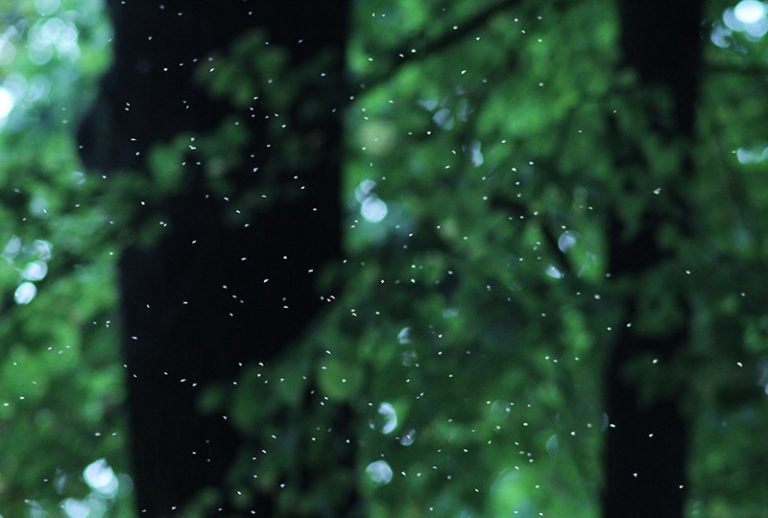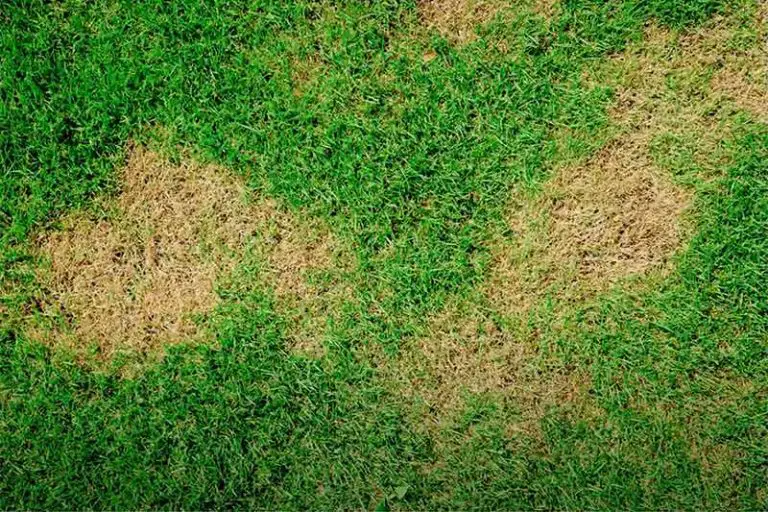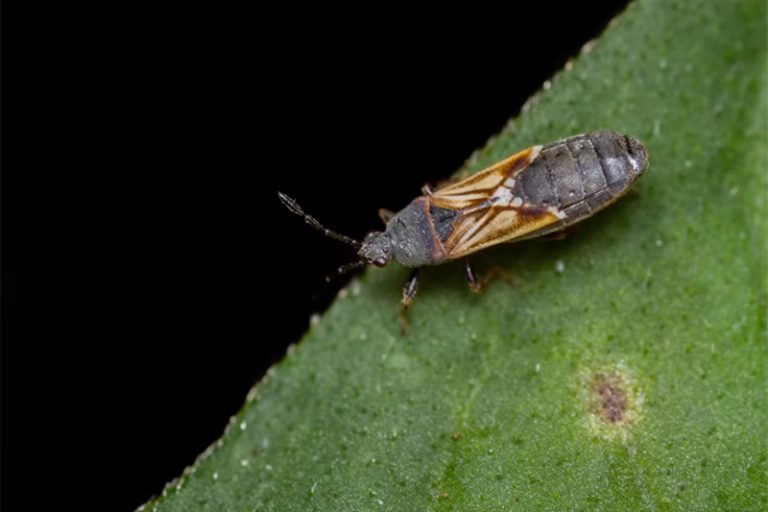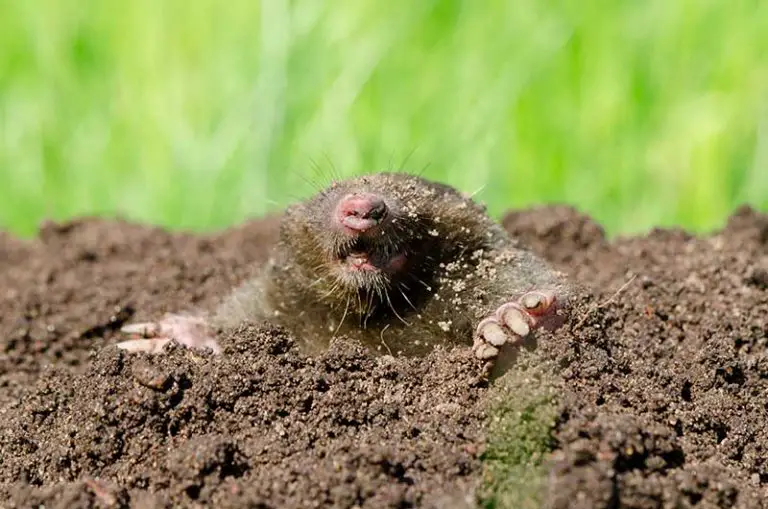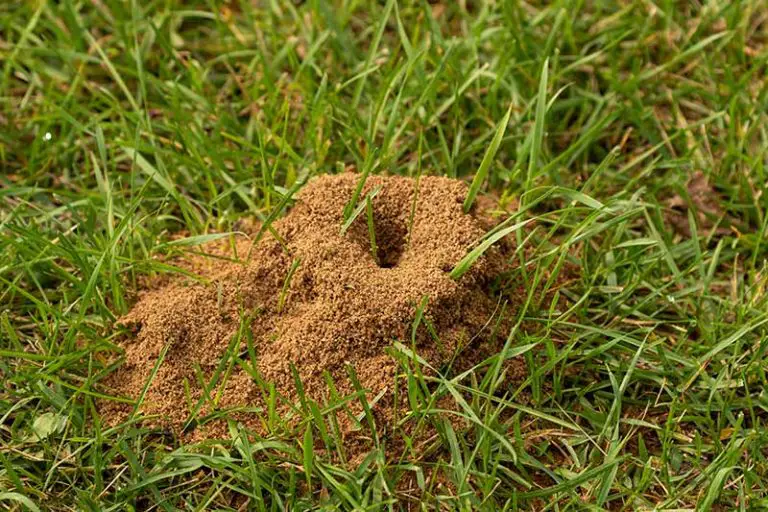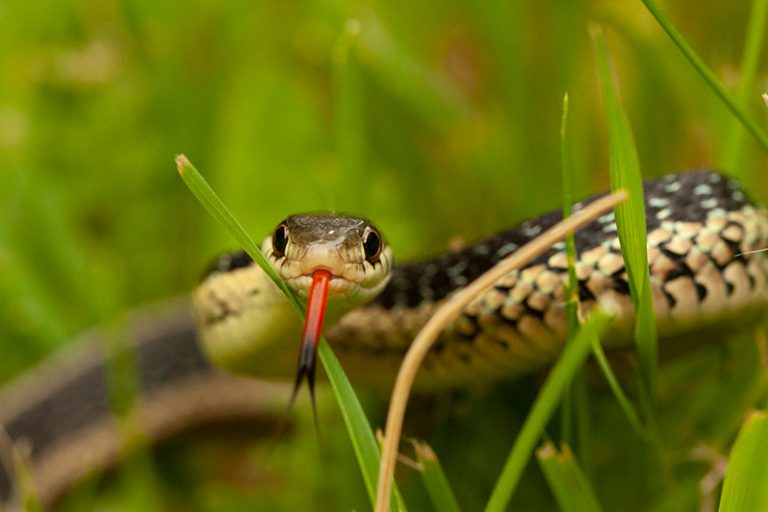Keep Your Lawn Dog-Free: Tips & Tricks
Despite the saying, dogs are not always a gardener’s best friend. Maintaining a healthy, beautiful lawn can be made difficult if there are some canine visitors that like to frequent it.
There is a range of methods you can use to keep dogs off your lawn and away from your property. These include social measures, such as talking to the dogs’ owners, putting up decoy deterrent signs, or getting into contact with your local shelter or animal control authority. Physical measures include putting up a fence or creating a living barrier from shrubs, using a commercial dog repellant, or installing a motion-sensitive sprinkler system.
What Damage Can Dogs Do To a Lawn?
Dogs can damage your lawn and other planting areas in a number of ways. Even if you are a dog lover, it isn’t unreasonable to want to protect your outdoor areas from these troublemakers. Dogs can damage your grass and planting beds, cause compacted soil, and may dig up holes in your lawn.
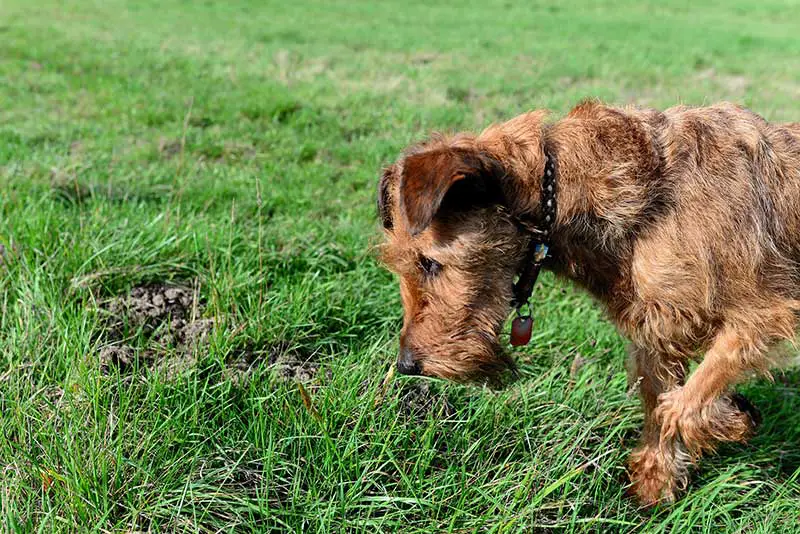
Damaged Grass
If left to roam freely, dogs can damage the grass on your lawn, along with any other plants growing in nearby planting beds. On a lawn, dogs can cause parts of the turf to turn yellow or die off completely.
This damage is typically caused by the substances contained in dogs’ waste. Dog pee and poop are naturally very high in nitrogen; although nitrogen is essential for plant life, too much nitrogen on a lawn can cause the grass to become burnt. This ultimately causes the grass to turn yellow or brown, before dying off. On top of this, dog poop contains moisture and bacteria that can promote the growth of harmful lawn fungi.
Holes in the Lawn
Another visible sign of dog damage on a lawn is having a lawn full of holes. It’s in a dog’s nature to dig, and they often seek out lawns in which to do so.
In addition to being unsightly, holes in your lawn can cause severe damage to the grass blades and roots. When dogs dig holes in the turf, the soil is overexposed to the air which can cause it to dry out. It may also cause areas of compaction in the soil, which we discuss in the next section.
Compacted Soil
The last way that a dog can damage your lawn may not be immediately apparent to the eye. From digging and running on your lawn, dogs can cause areas of the turf to become overly compacted.
Soil compaction affects the health of your grass and other plants growing in the soil. When the soil becomes compacted, it pushes out air pockets in the turf; these pockets are necessary for water, air, and nutrients to circulate the soil and reach your grass’ roots. Grass struggles to grow in hard dirt, as the grass plants have a harder time growing extensive root systems in the compact soil.
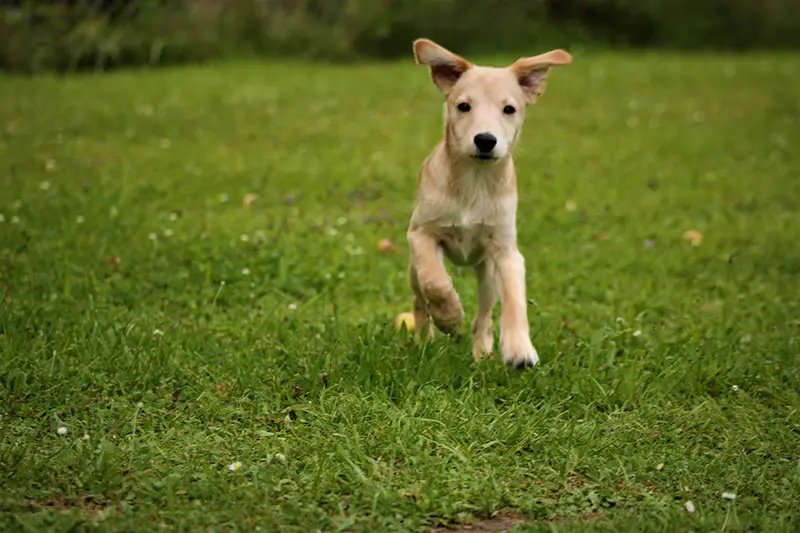
How to Keep Dogs Off Lawn
Below are the extensive options available for you to keep dogs off your lawn and away from your garden beds. We have explained both the social and physical measures you can take to deter dogs from your property.
Understand Your Local Ordaninces for Dogs
If you have a recurring issue with your neighbors’ dogs wandering on your property, it’s a good idea to look into the laws regarding dogs in your area. The majority of cities and counties have specific leash laws and regulations for dogs.
You could get in contact with your local governmental body or animal shelter to explore the legality of keeping your neighbors’ dogs off your lawn. If you’re actively dealing with an unwanted dog on your property, give an animal control agency a call; they will often come and pick up the dog at your request.
Take note that contacting the local authorities about your neighbors’ dogs will almost certainly create tension between you and them. This is an effective way to send the message to your neighbors; however, just be prepared that this may negatively affect your relationship with them. If you’d rather take a more friendly approach, try the next tip instead.
Speak With the Dog’s Owner
If you know who owns the dog, a more direct and friendly approach is to speak to the owner yourself. A lot of the time, dog owners aren’t even aware that their dog is roaming into areas it shouldn’t be. It may be as simple as having a civilized conversation with the dog owner to let them know.
Get in contact with your neighbor, taking a non-aggressive, friendly approach. Let them know the situation without getting angry or yelling. In general, people tend to respond much better to issues such as this when addressed in a respectful manner. Avoid threatening them with legal action or other similar threats.
Instead, take the angle that it would be a benefit to the dog if the owner kept it contained. Dogs that roam freely are more vulnerable to getting themselves into a dangerous circumstance; for example, coming into contact with cars, positions, non-pet-safe chemical treatments, or other hostile animals. If necessary, go as far as to tell a white lie that you treat your lawn with a non-pet-safe substance such as a skunk repellent. Hopefully, your neighbor responds sensibly to this, otherwise you will have to turn to the local authorities to take over.
Put Up Decoy Signs
Following the previous tip, you could reinforce the idea that your lawn is unsafe for pets using decoy signs. This may be enough to encourage local dog owners from allowing their dogs to walk over your lawn or garden.
Place some signs around your property to state that your lawn or garden has been treated for raccoons and skunks. Make it clear on the signs that your outdoor spaces are unsafe for dogs and cats. At the same time, avoid stating that the lawn is dangerous; the goal is to deter the pet owners rather than scare them. An example could be: “Yard treated for raccoons and skunks. Please keep pets off lawn and garden for their own safety.”.
Call Local Animal Control About Stray Dogs
The previous methods will not be possible in the case that you’re dealing with stray dogs. In this circumstance, you’ll have to get in touch with your local shelter or animal control authority.
Not only are stray dogs a nuisance, but they also pose a health hazard to humans and other animals. Very often, feral dogs carry diseases that are easily transmittable to others. Therefore, it’s important to let your local authority know if you have an issue with stray dogs in your area. They will either capture the animals for you or provide you with an animal cage to capture the animal yourself. Take note that capturing a dog you aren’t familiar with may be a dangerous act if the dog becomes hostile.
If you’re unsure whether the dogs you’re dealing with are strays, try asking around your neighborhood before contacting the authorities. This will help to avoid any unnecessary tension between you and your neighbors if you mistake their pet for a stray.
Remove Sources of Attraction on Lawn For Dogs
Having a regular recurring issue with dogs on your lawn indicates that something attractive is drawing them in. This is most likely due to a substance giving off an attractive smell to the dog.
Dogs are enticed by a range of smells, even those that we would consider to be foul. From barbecues and animal food, to rotten food and garbage, there are a few different smells that may be attracting dogs to your yard. If you own your own pets, avoid feeding them outside, or remove their food bowls immediately after feeding them. Make sure the lids on your trash cans are secure and avoid using amendments that contain bonemeal or blood meal.
Remove Dog Excrement As Quickly As Possible
Another smell that attracts dogs to certain areas is the scent of dog excrement. Dogs use their waste to communicate with each other, as well as a way to find where they’ve been before. They will often return to an area that smells like their own excrement, or that of other local dogs.
Be vigilant and remove any dog waste from your lawn as soon as you spot it. After removing the waste, douse the area with water to dilute the smell. Do the same if you spot any dogs peeing on your lawn as well. To further neutralize the smell of the waste, treat the area with a layer of baking soda. This will keep dogs off your lawn that would otherwise have returned to the familiar smell.
Be Mindful of the Fertilizer You Use on Your Lawn or Garden
Again, due to their smell, many types of fertilizer can attract dogs and other animals to your yard. Dogs enjoy the smell and even go as far as to ingest certain fertilizers that smell interesting to them. Therefore, changing your fertilizer could be a benefit to your lawn and the health of the dogs in your area.
The type of fertilizer least attractive to dogs is an organic, entirely plant-based fertilizer. This type of fertilizer typically doesn’t contain the range of ingredients that dogs find enticing. An easy option to create your own free plant-based lawn fertilizer is to mulch grass clippings or dead leaves.
Build a Dog-Proof Fence
If you have the option, the easiest way to keep dogs off your lawn is to erect a barrier around your property line. This will provide an instant blockage between your lawn and any wandering dogs. It also brings the additional benefits of security and privacy for you and your property.
This method ranges in price, depending on how much you wish to spend on the fencing. While there are some relatively inexpensive options, this method could become costly if you’re fencing a large space. However, it does provide an instant and permanent solution to keeping dogs off your lawn and property. This is a great option if you don’t have any issues with the aesthetics of having a fence.
Grow a Living Barrier
Another way to keep dogs off your lawn is through growing a hedge or a row of dog-proof plants or shrubs around your property. This method provides less security than erecting an actual fence; however, it still creates an effective barrier that will deter wandering dogs from your lawn.
Any dense or spiky shrubs will do the trick for this method; dogs will avoid areas with thorns or needles as these textures hurt their paws and make them uncomfortable. For instance, you could plant agave, aloe, barberries, hollies, prickly pear, evergreen huckleberry, or other similar succulents in a border around your lawn or garden.
Also, there are some plants that dogs have been known to naturally avoid. These tend to be highly aromatic plants, as dogs have such an acute sense of smell. The types of plants that repel dogs include pepper, garlic, onion, Coleus Canina, citronella, and lavender. Reinforce your property border by growing these plants alongside your living barrier or within your garden beds. The odor should help to deter dogs from your lawn and property.
Create a Ground-Level Barrier
If you’d rather not erect a standing barrier, it’s possible to create a ground-level barrier using a rough-textured material. Dogs will avoid walking over areas that have a rough texture that may hurt their paws.
Try laying a border of sharp gravel around the border of your lawn or garden. Alternatively, you could incorporate some rough or spiky materials in your mulch and that to your lawn or garden instead. The types of materials you could add to your mulch include large chunks or whole pine cones, plant clippings from thorny plants like roses or raspberry canes, chunky wood chips, or ground rubber tires.
Avoid using sand for this purpose, as this will only encourage the dogs to dig in the mulch or soil. Additionally, try blending citrus peel or adding citrus juice to your mulch too; the aroma will add an extra level of repellant to keep dogs off your lawn or garden.
Get a Commercial Dog Repellant
There are some products available on the market specially designed to keep dogs off lawns and gardens. These dog-repellant substances come in either liquid or granular format. They are ideal for treating entire areas, bordering certain areas, or spot treating certain plants to keep dogs away.
Both the liquid and granular formulations contain the same active ingredients that work to repel dogs. Most dog-repellant products contain the ingredient methyl nonyl ketone; this is a colorless oil that has a potent odor. This ingredient is an effective repellant for dogs and many other types of animals and insects.
For these repellants to be effective, their proper application is crucial. Make sure to read the application and safety instructions for your specific product carefully before using it. If using a liquid treatment, apply it when the weather is dry and the temperature is above 40°F. Don’t worry if the treatment doesn’t take full effect straight away; it may take some time for the dog to associate their discomfort from the repellant with the lawn. Reapply the treatment regularly throughout the year to ensure year-round protection.
Install a Motion Sensitive Sprinkler
A great alternative to a chemical dog repellant is to install a motion-activated sprinkler system. This method is ideal if you’d rather not treat your lawn with chemicals or change the landscape of your yard.
When an animal like a wandering dog walks crosses the sensor of the sprinkler, the sprinklers will turn on. This gives the animal a harmless but startling warning to keep off your lawn in the form of a jet of water. On top of this, the sprinkler will keep your lawn or garden well-watered too. They are a relatively inexpensive and non-invasive option compared to installing full fencing on your property.
With that said, this method isn’t always the most effective at keeping dogs off a lawn. If the same animals visit your yard regularly, they may get used to the sprinklers after a while. Also, the positioning of the sprinklers is crucial; it can be difficult to know where to best place them without some trial and error with the method. Cheaper models of sprinklers may also have too slow a reaction time to deter the animals before they have a chance to do their damage on your lawn. Investing in a decent sprinkler system is the way to avoid this issue.
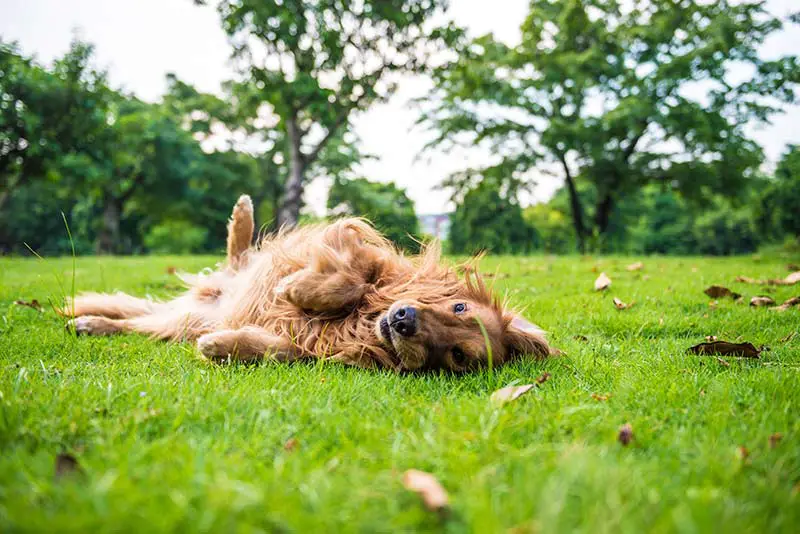
Avoid Using these Techniques to Keep Dogs Off Lawn
There are a few techniques that some recommend to keep dogs off your lawn that you should absolutely avoid. These are techniques that could potentially cause harm to yourself, the dog, or its owner.
Avoid Using Hot Peppers
Some recommend using hot peppers as a natural solution to deter dogs, such as black pepper or cayenne pepper. However, these substances can cause serious burns on the pads of dogs’ feet and their legs if they walk over them. It could also potentially make the dog ill if they ingest the pepper.
Other Natural Deterrants to Avoid
Other potentially harmful natural dog deterrents include coffee grounds, garlic powder, mothballs, or detergents. These are all also highly harmful to dogs if they manage to ingest or come into contact with them.
Avoid Aggression with the Dog or Its Owner
While dogs can be a nuisance, it’s unfair to take out your frustration on them or their owners. When addressing issues with your neighbors, always be respectful and avoid aggressive social moves. For instance, don’t throw dog waste from their animals into their yard; not only will this cause tension between you and them, but it’s also a criminal act that could result in legal charges. Similarly, don’t get aggressive with dogs that aren’t familiar to you; some dogs can quickly turn hostile if they feel threatened and may attack you out of defense in severe circumstances.

